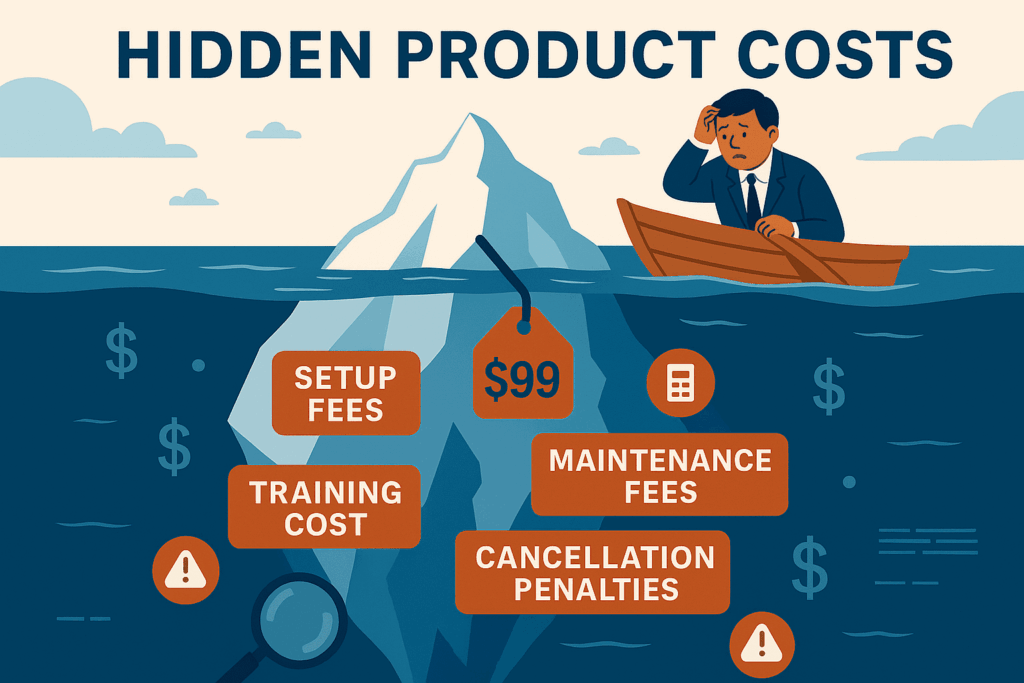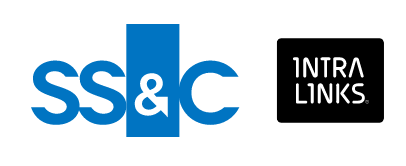Imagine your team is engaged in a big deal, such as mergers or acquisitions. You have planned every detail, including the budget for deal execution and virtual data rooms. But at the end of the transaction, you find out you were charged five to ten times more than quoted. Will the deal still deliver the expected benefits?
This frustration is common among dealmakers due to misleading virtual data room pricing models from vendors.
This article explores the challenges of per-page pricing in virtual data rooms and explains how it can lead to unexpected costs for dealmakers.

Understanding the per-page pricing model
The per-page pricing model charges you for each page uploaded to a virtual data room.
However, if you store your sensitive data in megabytes or gigabytes, how can you estimate the number of pages you need?
Legacy virtual data room solutions that use per-page pricing usually convert MB and GB into page counts.
The proposition might look like this:
| Data volume | Number of pages | Price for one page | Total price |
| 2,000 MB | 20,000 | $0.4 | $8,000 |
At first glance, it seems easy to predict your expected data costs. However, it can be tricky, and here is why.
What counts as a page?
Typically, a page is defined as one page of a standard PDF or Word document.
However, you usually upload more than just PDF and Word files to a data room. A transaction involves numerous documents in various formats: images, Excel spreadsheets, PowerPoint presentations, videos, audio files, zip files, and more.
How do you count pages in a PowerPoint presentation? What about video and audio files?
Virtual data room vendors using a per-page pricing model convert the size of each file into pages. For example, they may use a formula like 8 KB = one page.
So, here is what users might get when uploading a 50 MB non-PDF file, such as an Excel spreadsheet or PowerPoint presentation, for $0.40 per page:
| Size of a non-PDF file (on your device) | Offered conversion rate | Total number of pages | Total price |
| 50 MB | 8 KB = 1 page | 6,250 pages | $2500 |
Note: 1 MB = 1,000 KB
Now, consider if you have 10 or 50 more similar non-PDF files to upload—the final price could increase dramatically.
Financial risks of virtual data room per-page pricing
Per-page data room pricing structures carry the following financial risks:
1. Special media pricing
Providers using a per-page virtual data room pricing classify images, videos, audio files, and similar formats as “special media” and charge for them separately. Generally, the cost for these files is significantly higher, reaching up to $10 per MB.
So, if 30% of the data you need to upload to your virtual data room consists of special media, here is what you may pay for this:
| Special media size | Price for 1 MB of special media | Total special media cost |
| 500 MB | $10 | $5,000 |
As you can see, the expense for special media could amount to as much as 75% of the initial estimated total cost ($4,000).
2. Re-upload charges
While preparing for due diligence, you may delete certain documents from the data room for edits and upload them again.
Here is the catch! You are charged for those documents again. If you need to update a single document multiple times—say, 10 times—you pay for that one file 10 times. With hundreds of documents and thousands of pages in a data room, the total cost for data room services can rapidly increase.
3. Formatting and conversion fees
Virtual data room providers with a per-page pricing model may classify pages in your data room differently than they do for other non-PDF files when converting them into pages.
When you have a large amount of data to upload to a virtual data room, you typically don’t organize your files by type; you only know the total size.
Let’s say your 1,000 MB of data is divided into the following categories:
- PDF: 50%
- Excel: 10%
- PowerPoint: 5%
- Special media: 35%
Here is how your actual spending might break down:
| File type | MB | Pages | Actual cost |
| 500 | 5,000 | $2,000 | |
| Excel | 100 | 12,800 | $5,120 |
| PowerPoint | 50 | 6,400 | $2,560 |
| Special media | 350 | N/A | $3,500 |
Note: 8 KB = 1 page, 1 page = $0.4, 1 MB of special media = $10
As a result, the actual cost for your virtual data room increases to $13,180, nearly 3.3 times higher than the initial estimate of $4,000.
Time-based overages: The unexpected surprise
Often, transactions take longer than anticipated, and another harsh reality is that deal timelines usually impact virtual data room costs. As a result, dealmakers may face unexpected expenses.
1. Deal extensions and data retention
Longer deal timelines frequently result in hidden costs, especially since many providers charge extra for data retention beyond a specific period. If your project extends beyond the initial timeline, you may face additional fees for accessing your data.
Let’s say:
- The original data room contract is for 6 months.
- The virtual data room provider offers free data retention for only the initial contract period and then charges $1,000 per additional month for data retention beyond this period.
- The deal extends by 2 months beyond the initial timeline.
Calculation:
- Additional data retention cost for 2 extra months = $1,000 × 2 = $2,000
So, if the deal extends by two months, the company would pay an extra $2,000 just for data retention.
2. Prorated pricing issues
Another concern is how VDR providers manage pricing for extended use. Many do not prorate their fees, meaning any overage in time or data usage incurs full additional charges. For instance, if your virtual data room use extends a month beyond the original plan, vendors with a per-page pricing model may charge you two to three times more for that extra time or additional pages.
Assume:
- Monthly fee for extended month = $3,000.
- The deal incurs an extra 3,000 pages due to extended use, $0.40 per page.
Calculation:
- Monthly fee for the extended month: $3,000
- Cost of additional pages: 3,000 pages × $0.40 per page = $1,200
Total additional cost for the extended month = $3,000 + $1,200 = $4,200
Summary of additional costs
| Cost component | Additional cost for a virtual data room |
| Data retention (2 months) | $2,000 |
| Extended monthly fee (1 month) | $3,000 |
| Extra pages for extended month | $1,200 |
| Total | $6,200 |
The data volume trap: When uploads inflate costs
Data volume is critical in per-page pricing models since it can lead to unexpectedly high costs for dealmakers.
1. Billing based on uploads
If you upload a single document that is a few megabytes, it may be converted into a substantial number of billable pages. For example, a 10 MB PDF might be counted as 100 pages, depending on the provider’s conversion rate. Thus, what initially seems like a minor upload can result in significant charges, especially if you have multiple documents to upload.
2. Data bloat from unstructured files
Unstructured data, such as large multimedia files or high-resolution images, can drastically increase the number of billable pages in a data room. For example, the software may convert a single high-resolution video file into thousands of pages for billing purposes. Similarly, large image files can inflate the page count and raise costs.
So, dealmakers should keep an eye on data volume and media types to avoid those surprise costs. But there is a more thoughtful way—choosing a virtual data room provider with predictable costs.
How virtual data room providers with transparent pricing mitigate pitfalls
Transparent pricing models eliminate unpredictable data volume, retention, and media conversion costs. So, choosing a provider with upfront pricing enables safer budget control and prevents unexpected charges.
1. Flat-rate or subscription-based pricing
Top virtual data room providers with flat-rate or subscription pricing save clients money by offering fixed costs. This approach eliminates per-page fees and variable charges. Thus, clients pay a single rate, regardless of data volume.
This model is ideal for M&A projects with large documents or multimedia files, as it avoids costly per-page or per-upload fees.

2. Clear media policies
Transparent virtual data room providers specify media handling policies to prevent hidden charges. In particular, they clarify how different media types are billed, removing guesswork.
Some providers guarantee no additional charges for media types, covering these under the flat monthly fee or within the subscription. This is particularly beneficial for M&A deals involving complex documents, as users are not penalized for using essential multimedia files.
This model is ideal for projects involving large or complex media files, such as high-resolution images, videos, and CAD drawings, where unexpected per-page or conversion fees could significantly inflate costs.
👁️🗨️ One of the leading virtual data room providers that implement a transparent pricing system is Ideals. This solution offers usage-based pricing to ensure clear and predictable costs. This way, businesses can better manage their budgets and avoid hidden fees. Learn more about how Ideals solutions can benefit your transaction.
Ideals

- Access controls
- Built-in viewer
- Full-text search
- Auto-indexing
- Customizable branding
- Advanced Q&A
- In-app live chat support 24/7
- 30-second chat response time
Intralinks

- Access controls
- Built-in viewer
- Full-text search
- Auto-indexing
- Customizable branding
- Advanced Q&A
- In-app live chat support 24/7
- 30-second chat response time
SmartRoom

- Access controls
- Built-in viewer
- Full-text search
- Auto-indexing
- Customizable branding
- Advanced Q&A
- In-app live chat support 24/7
- 30-second chat response time
Box

- Access controls
- Built-in viewer
- Full-text search
- Auto-indexing
- Customizable branding
- Advanced Q&A
- In-app live chat support 24/7
- 30-second chat response time
Citrix

- Access controls
- Built-in viewer
- Full-text search
- Auto-indexing
- Customizable branding
- Advanced Q&A
- In-app live chat support 24/7
- 30-second chat response time
Conclusion
While per-page pricing models for virtual data rooms may seem straightforward, they often lead to unexpected and inflated costs for dealmakers. The challenges of converting data size into page counts, hidden charges for special media, re-uploaded documents, and extended deal timelines can increase expenses.
To avoid these pitfalls, dealmakers should consider a virtual data room provider with a subscription or flat-rate pricing model. These models ensure a more predictable and cost-effective experience, especially for complex M&A transactions involving large or multimedia files.